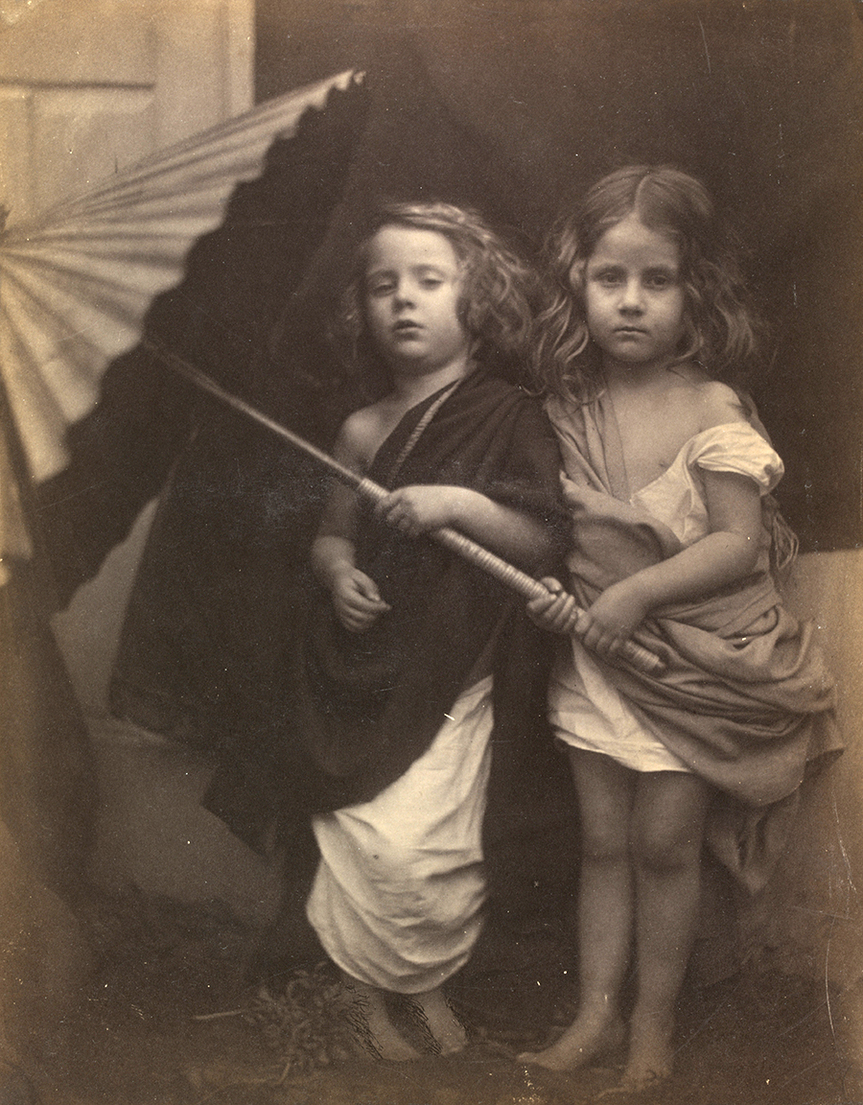
R
E
V N
E
X
T
Julia Margaret Cameron (1815–1879), a talented, free-spirited and highly intelligent English woman began to photograph at the age of 48. In a relatively short career span before her death in 1879, her work of over 1,200 striking portraits made in the 19th century remains one of the most significant body of work which elevated photography as a valuable art form. To mark the bicentenary of Cameron’s birth and the 150th anniversary of her first exhibition at South Kensington Museum—now the Victoria and Albert Museum—in 1865, Sydney’s Art Gallery of New South Wales will open the exhibition “Julia Margaret Cameron: From the Victoria and Albert Museum, London” on August 14.
Born in Calcutta in 1815, Cameron was a colonial expatriate with a liberal and informal education received from her maternal grandmother in Versailles, France. At the age of 21, she met her husband Charles Hay Cameron (1795–1880), a jurist and a member of the Law Commission of the Supreme Council of India, in South Africa. The two settled in India and had four children before relocating to England in 1848 where they had two more. In 1860, Cameron and her family moved to Freshwater village on the Isle of Wight after visiting the poet Alfred Tennyson (1809–1892). It was here that Cameron began her photographic endeavor upon receiving her first camera as a gift from her daughter in 1863.
Predominantly self-taught, she made photographs that transcended reality and spoke directly to the human spirit. In the following decade the camera became far more than an amusement to her: “From the first moment I handled my lens with a tender ardor,” she once wrote, “and it has become to me as a living thing, with voice and memory and creative vigor.”
At Freshwater, Cameron transformed her estate into a studio and darkroom by converting a henhouse and a coalhouse. She often enlisted friends, family and household staff in her photographs by dressing and staging them to re-enact scenes from Biblical, mythological and historical narratives, aiming to capture qualities of innocence, virtue, wisdom, piety, or passion. For Cameron her subjects were to be modern embodiments of classical, religious and literary figures. In photographs such as Kept in the Heart (1864), for instance, a parlor maid was transformed into the Madonna; a neighbor’s child role-played as baby Jesus in Hosanna (1865); and Cameron’s husband assumed the guise of Merlin in Vivien and Merlin from Illustrations to Tennyson’s Idylls of the King (1874). Among her other famous subjects were some of Victorian England’s greatest minds: the painter George Frederic Watts; the poets Robert Browning, Henry Taylor, and Alfred Lord Tennyson; the scientists Charles Darwin and Sir John Herschel; and the historian and philosopher Thomas Carlyle, and Julia Jackson, Cameron’s niece and the mother of Virginia Woolf.
Despite her acclaim, Cameron’s portraits were not universally admired, and she particularly had criticisms from fellow photographers as her aesthetic tendency challenged the polished, formal poses of commercial studio portraits of the time. Her unconventional techniques embraced imperfects, soft often-blurry focus and tight cropping. She would leave fingerprints, streak marks, hair, fractures and swirls of collodion solution on her negatives. Her aspirations were, as she wrote to John Herschel in 1864, “to ennoble photography and to secure for it the character and uses of High Art by combining the real and the ideal and sacrificing nothing of the Truth by all possible devotion to poetry and beauty.”
Today, we owe much to Cameron’s instinctiveness and ambitions as a businesswoman since she fastidiously promoted, published and exhibited her work and was the first photographer to take advantage of England’s Copyright Bill of 1862, registering 508 works for copyright between 1864 and 1875, thus ensuring the longevity and survival of this important body of work.
Billy Kung is photo editor at ArtAsiaPacific.



